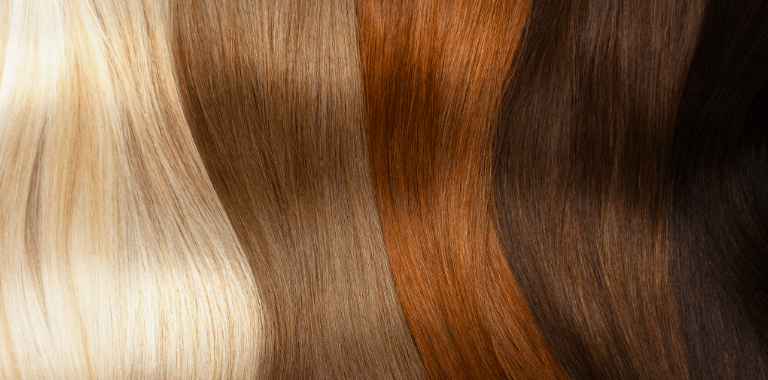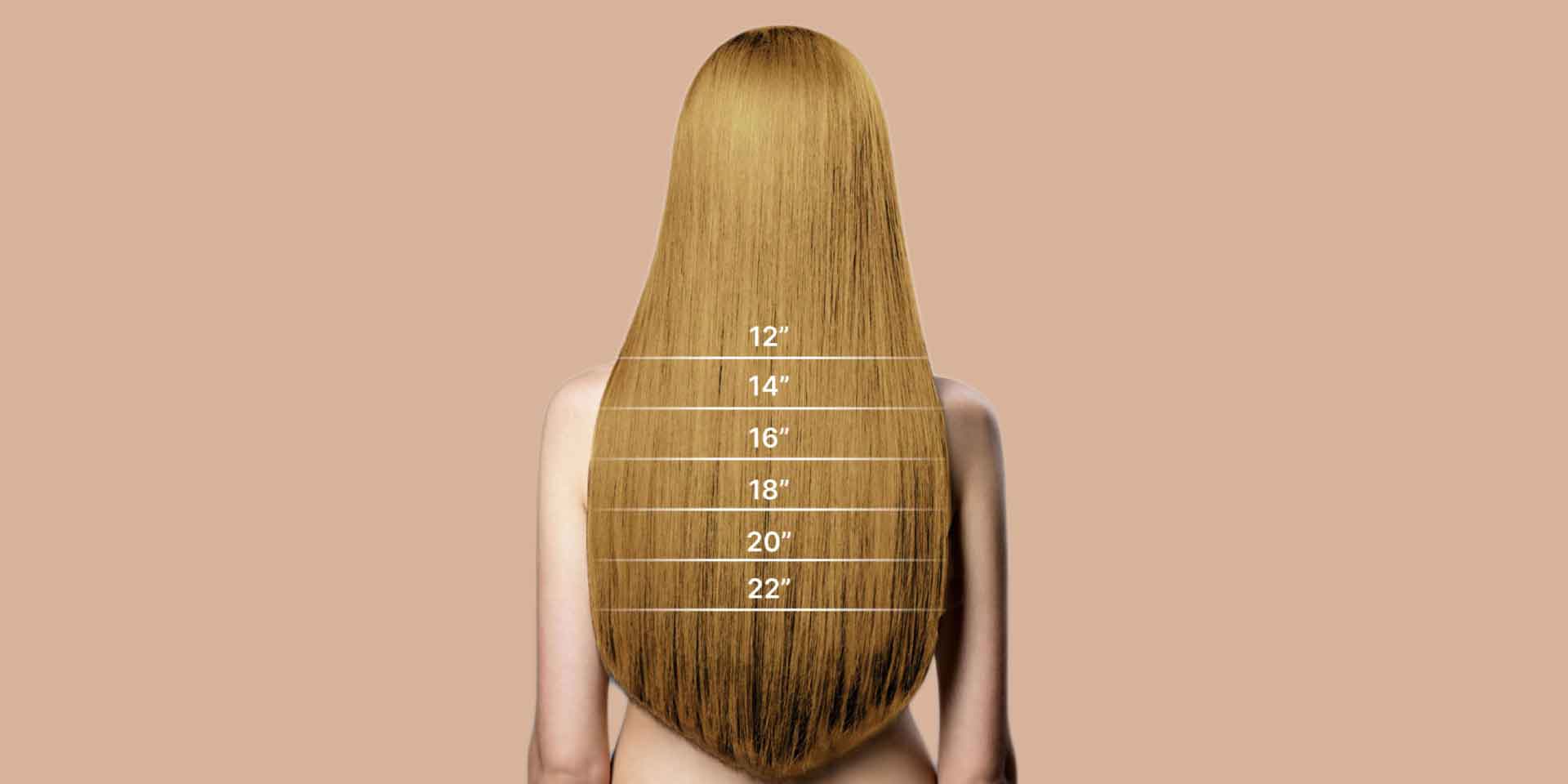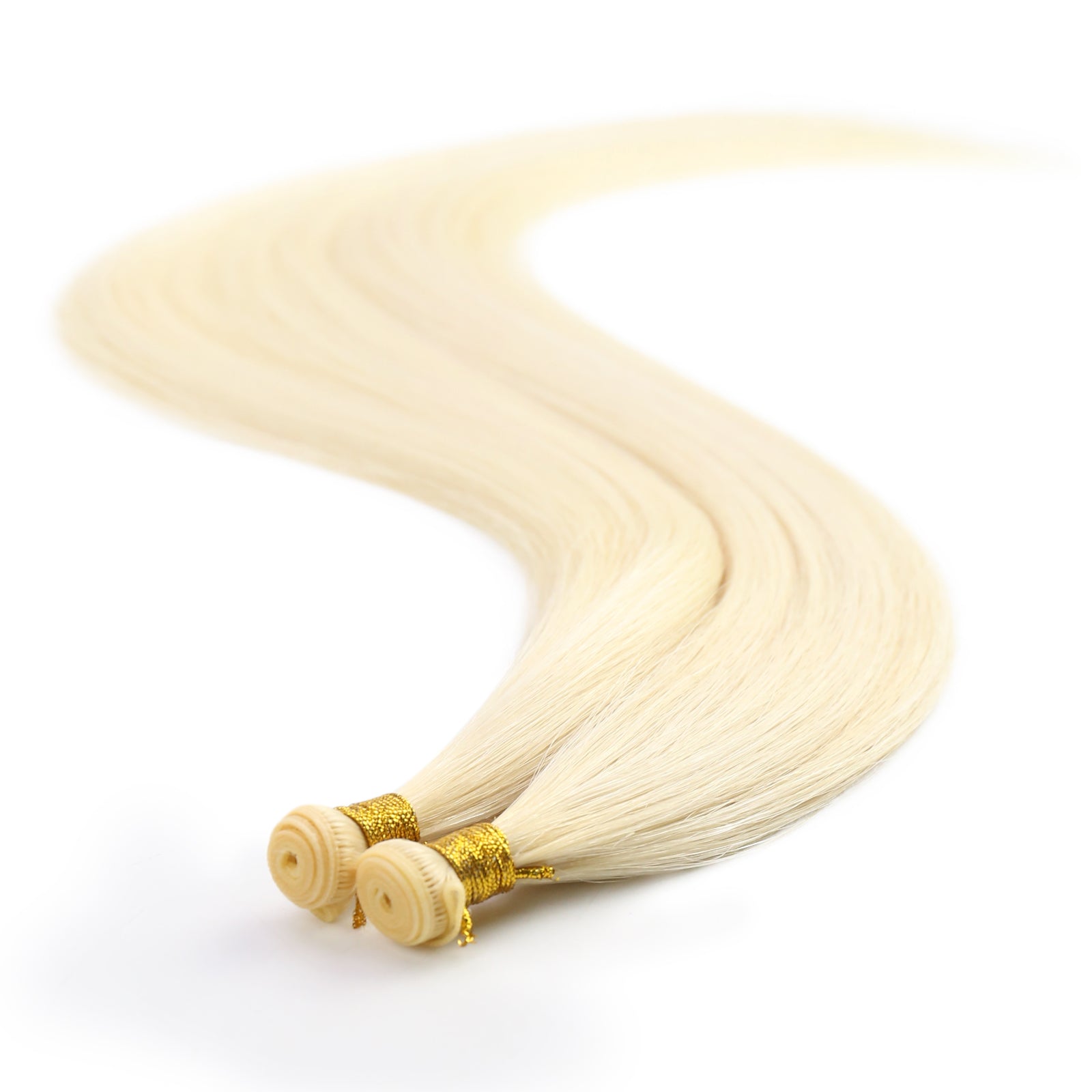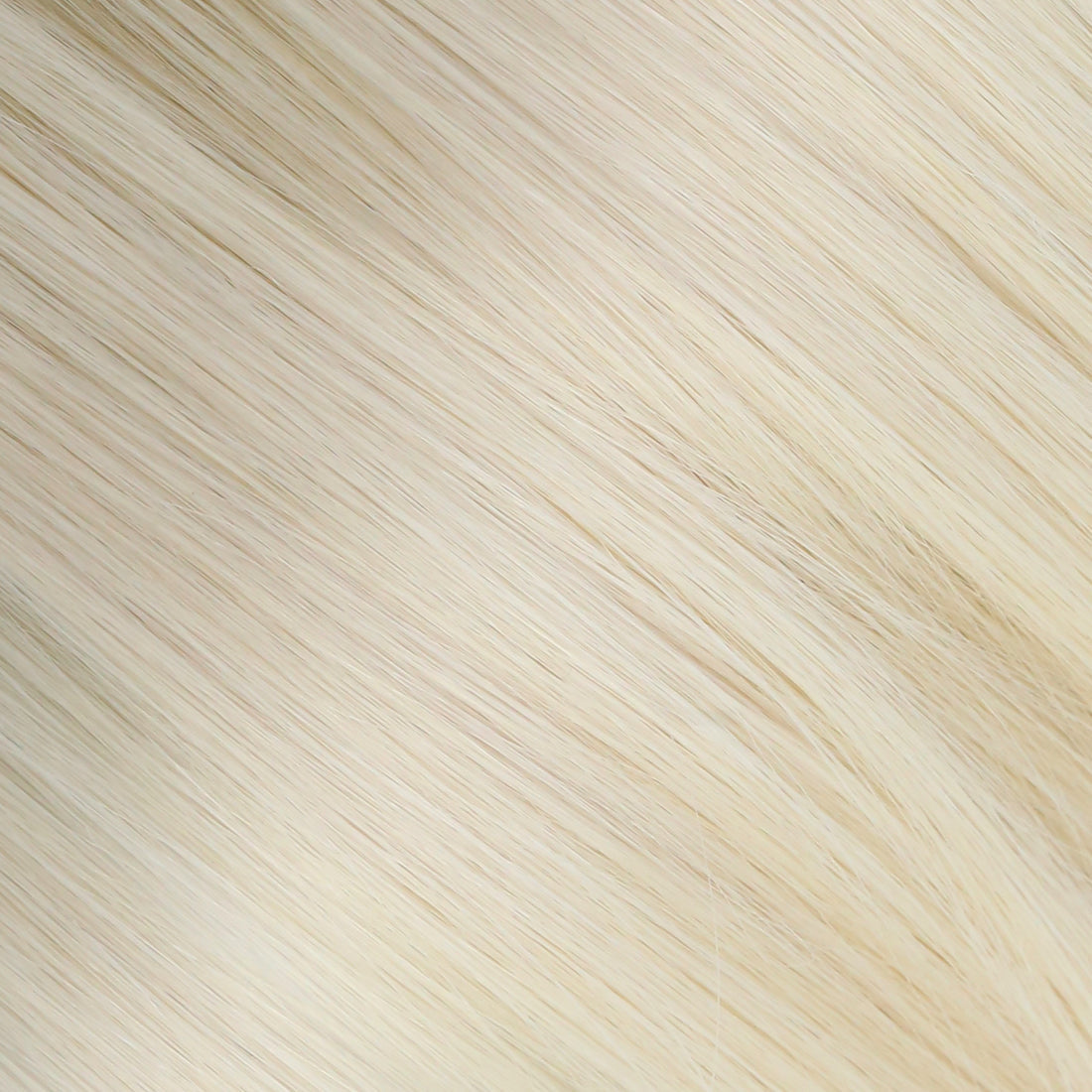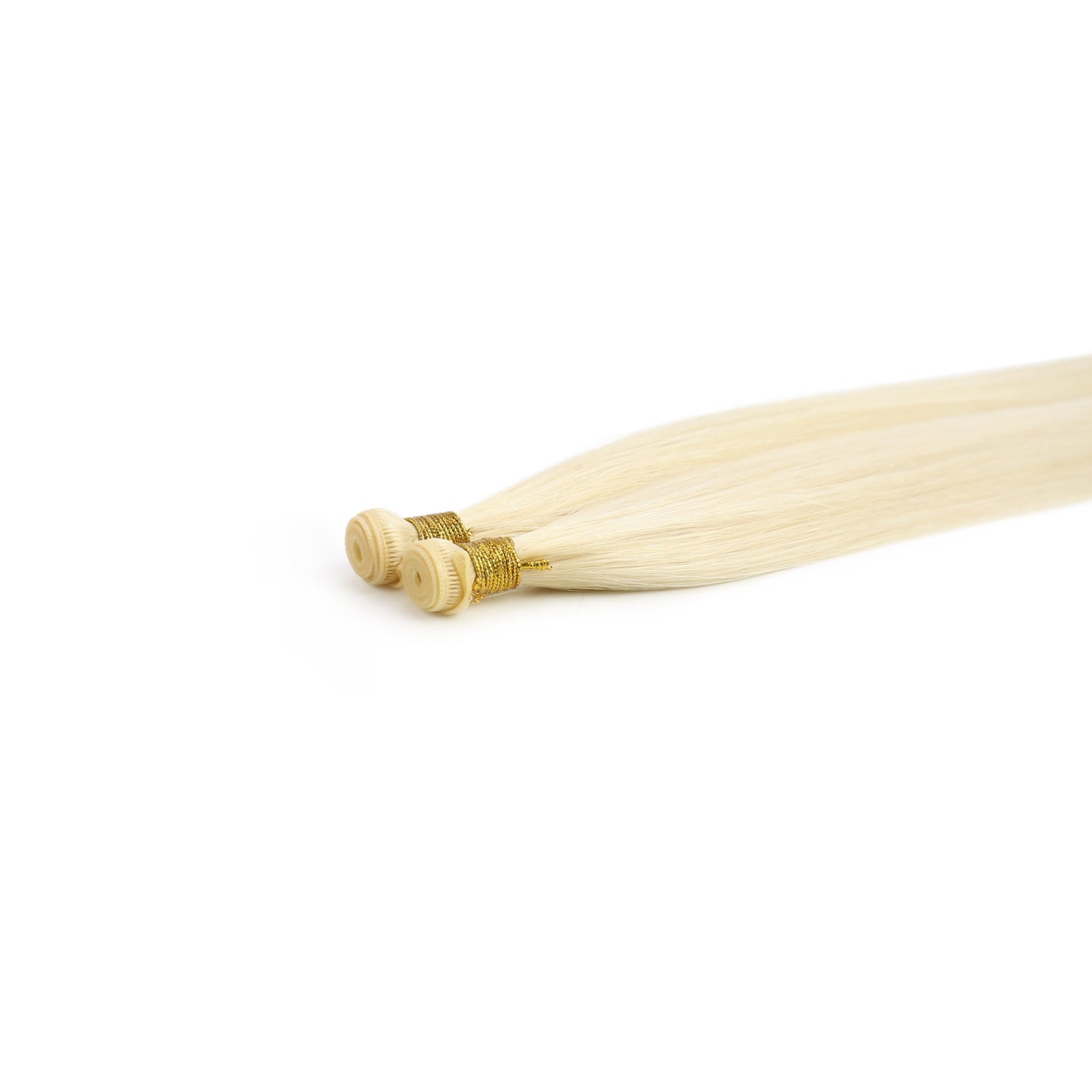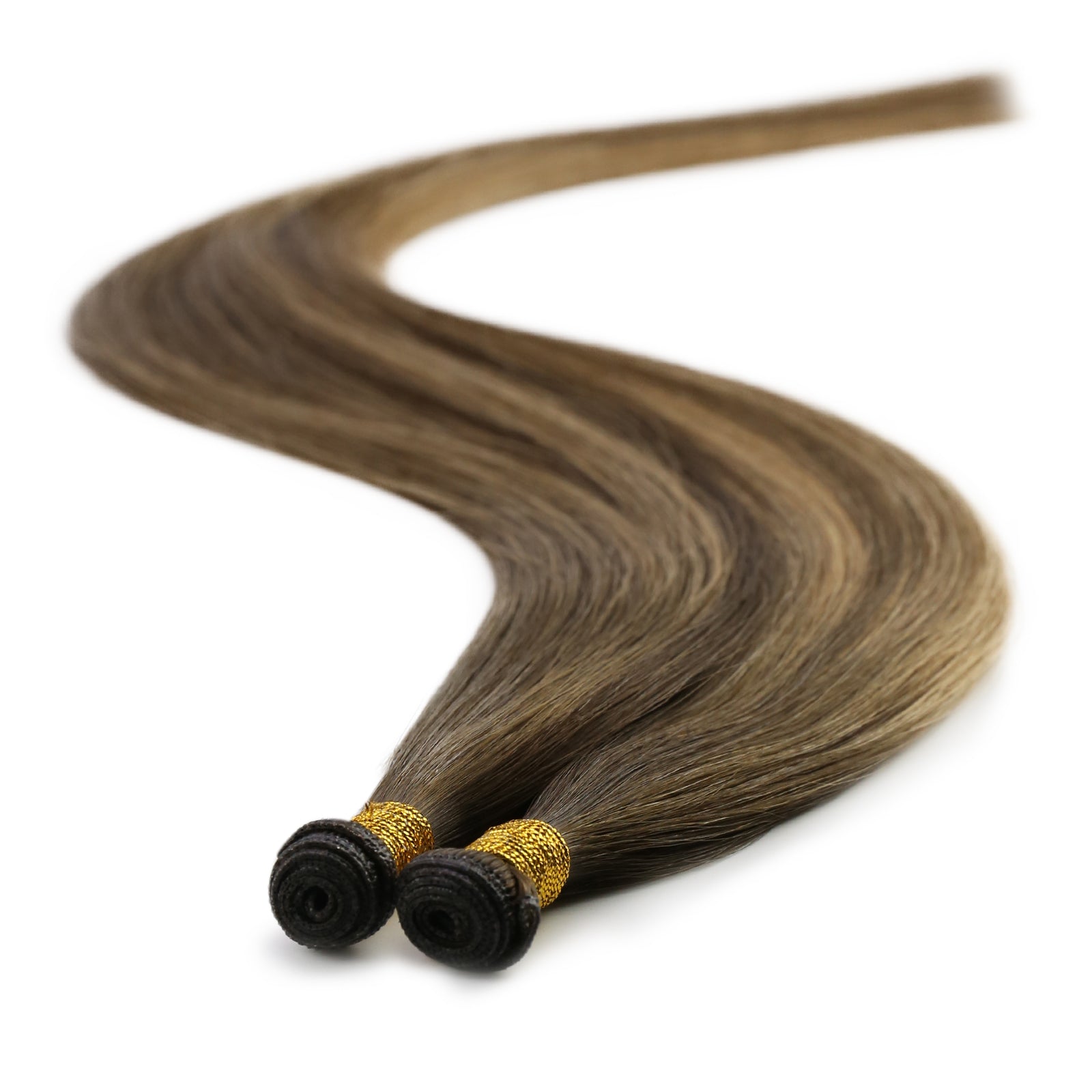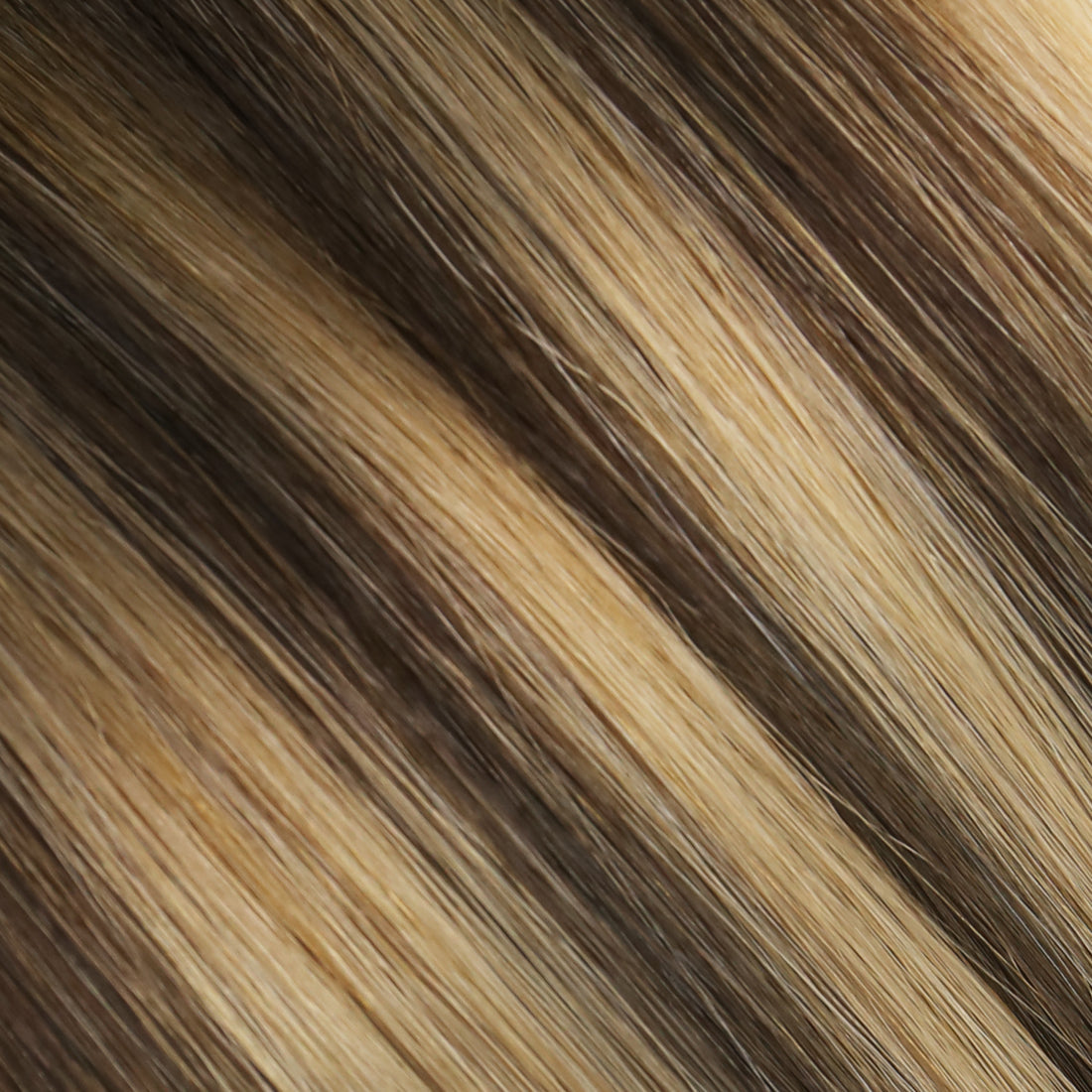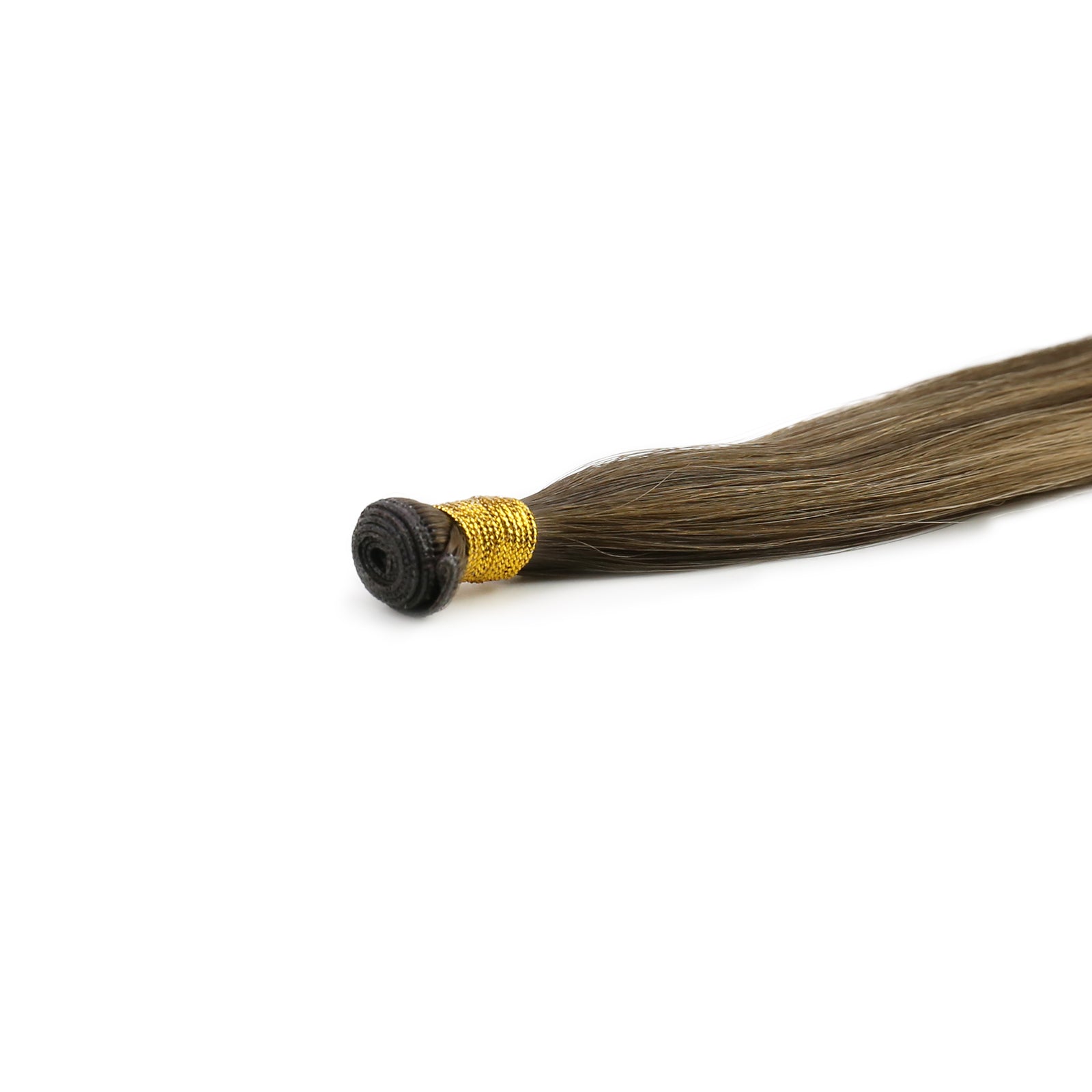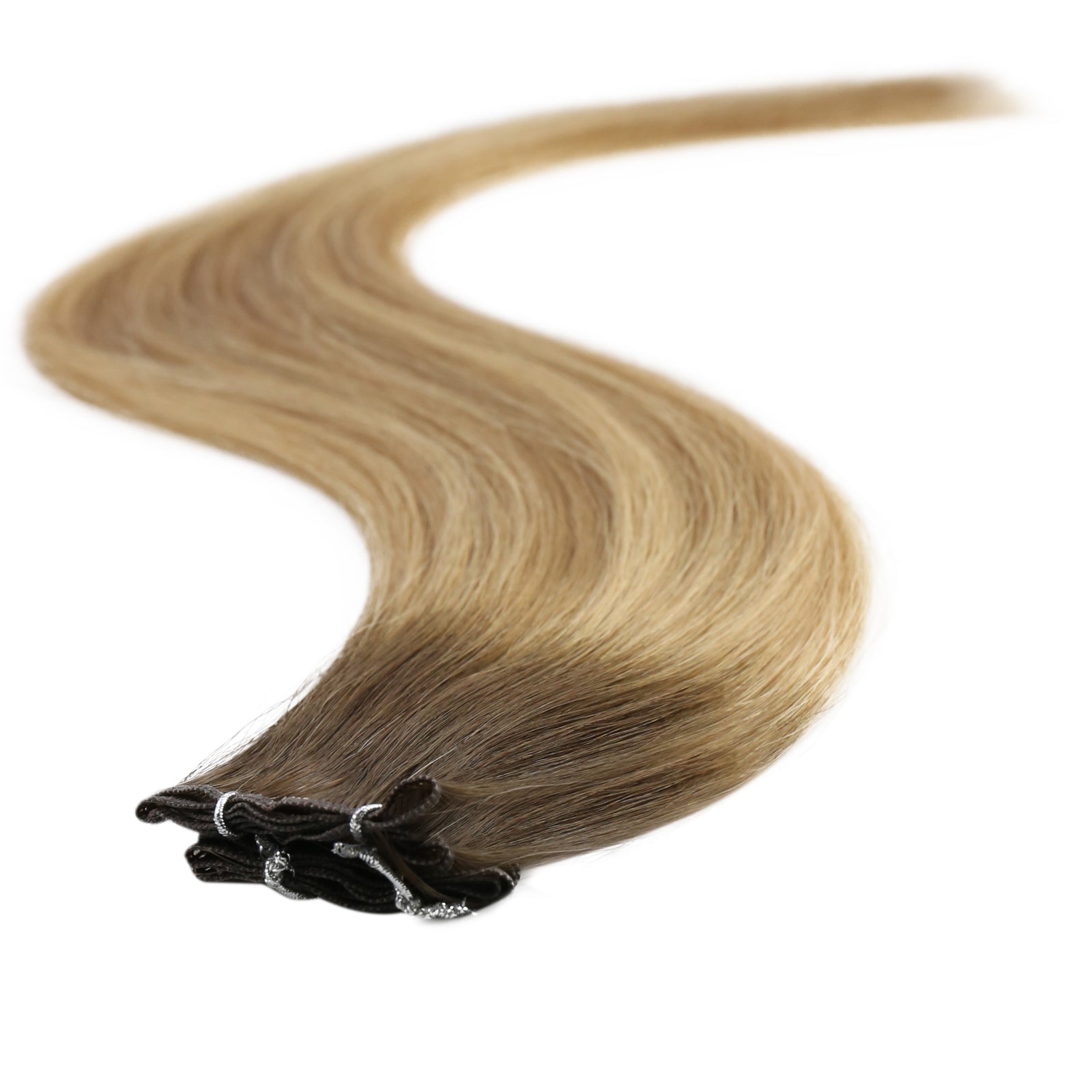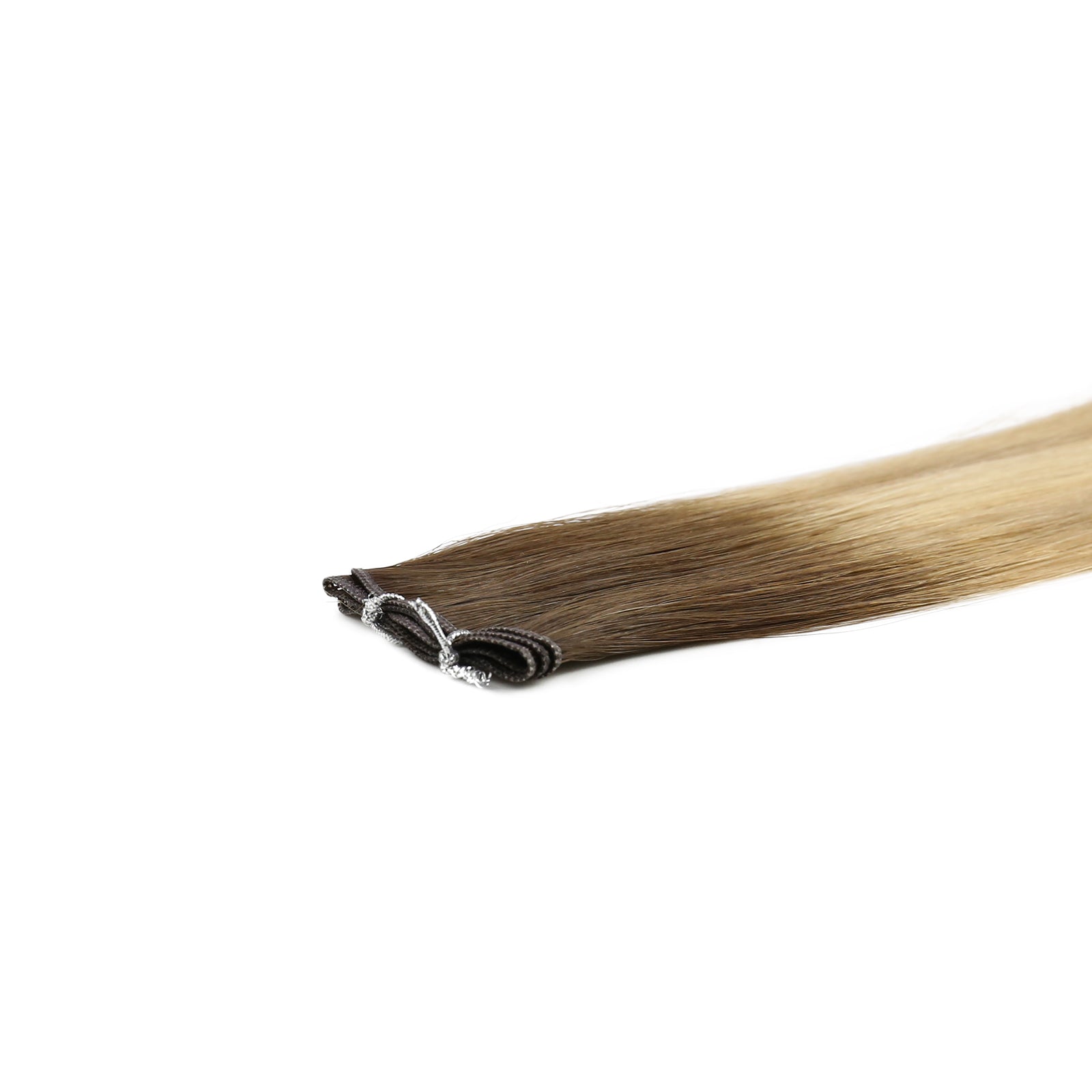Do you know how to sleep with hair extensions? Proper nighttime care is crucial for extending the life and preserving the beauty of your extensions. Throughout this post, we'll share essential tips and tricks to protect your extensions as you sleep. Whether you're a first-time wearer or a seasoned extensions enthusiast, these insights will help ensure your hair remains in top condition, night after night. Get ready to transform your evening routine for the betterment of your beloved extensions.

Can you sleep with hair extensions?
Sleeping with hair extensions largely depends on the type of extensions you have. Here's a breakdown of which types you can sleep with, why, and which types you should not, along with the reasons:
Types you can sleep with
-
Tape-In Extensions
- Tape-ins are semi-permanent and securely attached close to the roots of your hair. They are designed to be worn for several weeks, including during sleep. It's important to braid your hair loosely or tie it in a soft ponytail to prevent tangling.
-
Sew-In (Weave) Extensions
- These extensions are sewn into cornrowed natural hair, making them very secure. Since they're meant to be a long-term hair solution, you can sleep with them. Protecting the hair with a silk scarf or bonnet can help maintain the weave's appearance.
-
Micro-Link (Micro-Bead) Extensions
- Micro-link extensions are attached to small sections of natural hair using a tiny bead. They're designed to stay in for months at a time, including during sleep. Gentle hair care routines can minimize damage.
-
Fusion (Keratin Bond) Extensions:
- Fusion extensions, also called k-tips, are bonded to natural hair using keratin and can last for several months. Sleeping with these extensions requires a silk or satin pillowcase to reduce friction.
-
Hand-Tied Weft Extensions:
- Hand-tied wefts are sewn into the hair and are meant for continuous wear, including nighttime. They require gentle handling to prevent the wefts from loosening.
Types you should not sleep with:
-
Clip-In Extensions
- Clip-ins are designed for temporary wear and can cause discomfort, tangling, and potential damage to both the scalp and the extensions if slept in. They should be removed each night before bed.
-
Halo Extensions:
- Like clip-ins, halo extensions are designed for daily wear and not for sleeping. Sleeping with them can lead to tangling and damage to the extension's wire or fabric band.
Remeber, proper nighttime care is crucial for the longevity of hair extensions and the health of your natural hair, regardless of the extension type. Now let’s see how to sleep with hair extensions without damaging them.
How to sleep with hair extensions
Sleeping with hair extensions requires careful practices to ensure they remain in good condition and to avoid damaging your natural hair. Here's how to sleep with hair extensions, applicable to most semi-permanent types like tape-in, sew-in, micro-link, fusion, and hand-tied weft extensions:

- Detangle Gently
- Before going to bed, use a soft bristle brush or a wide-tooth comb to gently detangle your hair from roots to ends. This prevents matting and tangling, which can be more difficult to manage in the morning.
- Braid or Tie Your Hair
- To minimize movement and friction that can lead to tangling, consider braiding your hair loosely or tying it in a loose ponytail or bun. Avoid tight hairstyles that can put unnecessary stress on the extensions and your scalp.
- Use Silk or Satin Pillowcases
- Sleeping on silk or satin pillowcases can significantly reduce friction and prevent your hair from becoming tangled and matted overnight. These materials are smoother than cotton and can help keep your hair extensions looking fresh.
- Consider a Hair Wrap or Bonnet
- If you have very long or curly extensions, wrapping your hair in a silk scarf or wearing a silk or satin bonnet can provide extra protection against tangling and frizz.
- Moisturize the Ends
- Applying a light leave-in conditioner or hair oil to the ends of your hair can help keep your extensions hydrated and prevent dryness, which can lead to breakage. Be sure to avoid the bonds or tapes to prevent loosening.
- Avoid Sleeping with Wet Hair
- Going to bed with wet hair extensions can lead to tangling and matting. Make sure your hair is completely dry before you sleep. If you must go to bed with damp hair, braid it loosely to control tangling.
- Regular Maintenance
- Regular maintenance appointments with your stylist are crucial for the longevity of your hair extensions. They can address any issues, such as loosening or tangling, and can recommend products and practices tailored to your specific type of extension.
- Morning Care
- In the morning, gently untie or unbraid your hair and brush it starting from the ends and working your way up to the roots to remove any tangles that may have formed overnight.
By following these steps, you can sleep with your hair extensions without causing damage, ensuring they stay looking beautiful for as long as possible.
The best way to sleep with hair extensions
Sleeping on your back is actually one of the best positions when it comes to minimizing the risk of damaging your hair extensions during sleep. This position can reduce the amount of friction and pressure on the extensions compared to sleeping on your side or stomach. Here's why sleeping on your back is beneficial.

- Even Weight Distribution: When you sleep on your back, the back of your head rests directly on the pillow. This spreads out the pressure and avoids concentrating it on the areas where extensions are typically placed (sides, back of the head). In contrast, sleeping on your side or stomach puts direct pressure on specific sections of the hair, which can pull on the extensions and potentially weaken their bonds over time.
- Reduced Friction: Back sleeping allows your hair to lay flat against the pillow, minimizing the rubbing and tangling that can occur when hair is trapped between your head and the pillow or your head and the mattress. This reduced friction is key in preventing the hair extensions from matting and tangling.
- Minimized Movement: While it's natural to move somewhat during sleep, being on your back can limit the amount of hair movement compared to tossing and turning on your side or stomach. Less movement means fewer opportunities for the hair to become tangled, knotted, or for the extensions to pull on your natural hair.
- Avoidance of Direct Contact: Since most extensions are applied to areas around the sides and back of the head, sleeping on your back keeps these sections from coming into direct contact with the pillow or mattress. This prevents the extensions from bearing the brunt of any movements or pressure throughout the night.
To maximize the benefits of sleeping on your back and to further protect your hair extensions, incorporating a silk or satin pillowcase can be beneficial. These materials create a smooth surface that reduces friction and helps keep your hair and extensions in better condition.
What not to do before sleeping with extensions
To ensure the longevity of your hair extensions and maintain the health of your natural hair while sleeping, there are several key things you should avoid doing before going to bed:

- Don't Sleep with Wet Extensions
- Sleeping on wet hair extensions can cause matting, tangling, and even lead to the growth of mildew if they remain damp for prolonged periods. Always ensure your extensions are fully dry before going to bed.
- Don't Skip Detangling
- Failing to gently brush and detangle your hair and extensions can result in knots and tangles becoming worse overnight. Use a soft bristle brush or a wide-tooth comb to carefully detangle from ends to roots.
- Don't Tie Your Hair Too Tight
- Avoid putting your hair in tight ponytails, buns, or braids before sleep. Tight hairstyles can put unnecessary stress on your scalp and the attachment points of the extensions, potentially causing damage or discomfort.
- Don't Use Cotton Pillowcases
- Cotton pillowcases can create friction and cause your hair to tangle and frizz. It's best to avoid these before sleeping with extensions and opt for silk or satin pillowcases instead.
- Don't Neglect to Protect Your Hair
- Not using a silk scarf, bonnet, or specially designed hair wrap can leave your extensions exposed to potential tangling and friction against bedding materials. Protecting your hair can significantly reduce these risks.
- Don't Use Heavy Products Near the Bonds
- Applying heavy hair products, oils, or leave-in conditioners near the roots or bonds of your extensions can cause them to slip or become loose over time. Always apply products sparingly and avoid the bond areas.
- Don't Ignore Extension Type-Specific Care
- Different types of extensions may require specific care routines before bed. For example, clip-ins should be removed, while tape-ins, sew-ins, and others may have unique care instructions. Always follow the guidance specific to your extension type.
- Don't Forget Regular Maintenance
- Neglecting regular maintenance checks with your stylist can lead to unnoticed issues worsening over time. Ensure you're following any specific pre-sleep advice they provide to keep your extensions in top condition.
By avoiding these practices, you can help extend the life of your hair extensions and keep both your extensions and natural hair healthy and looking great.
Summing up
Mastering how to sleep with hair extensions is crucial for maintaining their beauty and longevity. Through adopting a thoughtful nighttime routine, you can protect your extensions effectively. This guide aims to empower you with the knowledge to keep your extensions in pristine condition, ensuring you enjoy beautiful, healthy hair day and night. Remember, the secret to flawless extensions isn't just in their care but also in the nightly rituals that safeguard their elegance.

